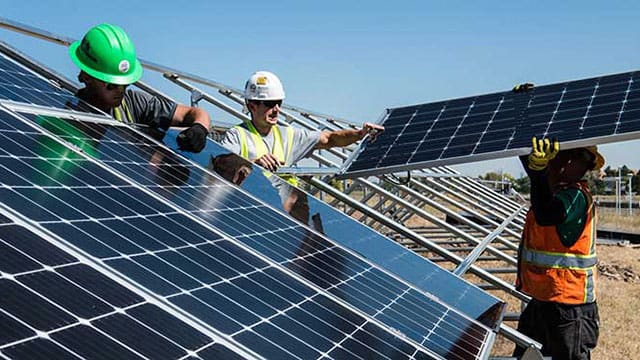Without affordable storage, solar energy is an unreliable, impractical and dangerous experiment

For interview requests, click here
Solar energy’s promise of a green, abundant future is captivating – but beneath the shiny panels lies a more complicated reality.
Advocates of solar energy highlight its ability to reduce carbon emissions and its reliance on a free, limitless resource – the sun. However, these claims often overlook critical challenges. Solar power is unreliable without storage, and the cost of making it dependable is far higher than most people realize. Furthermore, integrating solar energy into power grids can lead to higher electricity bills and instability for consumers.
Solar panels only produce electricity during daylight hours and perform best in sunny weather. To use solar energy consistently – when the sun isn’t shining – requires significant energy storage, such as batteries, pumped hydro, or other technologies. This is referred to as “dispatchable” energy – electricity that can be stored and delivered on demand, regardless of when it is generated. Without affordable storage solutions, solar power cannot deliver reliable electricity around the clock.
 Photo by Science in HD |
| Recommended |
| Green energy hype isn’t backed by the data
|
| How poverty can save the planet
|
| Global energy transition is doomed without a realistic plan
|
To make solar energy truly dispatchable, the world would need to store at least 12 hours of electricity generated by solar panels. Using the global installed solar capacity of 1.6 terawatts (TW), this equates to 19.2 billion kilowatt-hours (kWh) of storage. Batteries are currently the most practical storage solution, but at today’s utility-grade cost of C$670.99 per kWh, achieving this level of backup would cost approximately C$12.9 trillion. For a more reliable 24-hour backup, the cost doubles to an astronomical C$25.8 trillion.
For perspective, the total global GDP in 2023 was about C$148 trillion, according to the World Bank. Even if every country on Earth pooled its resources, funding the necessary storage infrastructure for solar power would be economically unfeasible. As of 2023, total global energy storage capacity was only 260 gigawatts (GW), a fraction of the 3.2 million GW of global power production in 2022.
These financial and technical hurdles are not the only problems with solar energy. Without adequate storage, integrating solar power into existing grids destabilizes them. Solar energy is often marketed with a “levelized” cost, which averages out production costs over the lifetime of the panels and makes solar seem cheaper than it actually is. However, this misleading pricing undercuts traditional energy sources like coal, natural gas, and nuclear, which are essential for providing stable, on-demand electricity.
High solar and wind power output can push electricity prices into negative territory when there’s an oversupply, as noted by the Institute for Energy Research. But prices can then spike when the sun sets or winds calm, as the fixed costs of traditional power plants are spread over fewer hours of operation. This pricing volatility increases costs for utilities and, ultimately, for consumers. California offers a cautionary tale, where solar mandates have led to frequent blackouts and wildly fluctuating electricity bills.
The stakes go beyond economics. Reliable energy is vital for hospitals, schools, businesses, and homes. Without traditional baseload power sources, gaps in energy supply can lead to outages with potentially dangerous consequences. Without sufficient storage, solar energy forces continue to rely on these conventional sources, undermining its promise of a clean, independent energy future.
Despite its challenges, solar energy has made remarkable advances, and ongoing innovation in battery technology could reduce storage costs in the future. Companies like Tesla are developing large-scale battery solutions, and researchers are exploring alternatives like pumped hydro and compressed air storage. However, these technologies are not yet viable at the scale needed to support a global transition to solar power.
Until storage costs drop dramatically and grid infrastructure adapts, solar energy remains a seductive but impractical solution for meeting global energy needs. Its unchecked adoption risks turning power grids into costly and unreliable experiments, jeopardizing energy security and stability.
Ian Madsen is the Senior Policy Analyst at the Frontier Centre for Public Policy.
Explore more on Alternate energy, Environmental extremism, Energy security, Energy poverty, Energy transition
The views, opinions, and positions expressed by our columnists and contributors are solely their own and do not necessarily reflect those of our publication.
© Troy Media
Troy Media is committed to empowering Canadian community news outlets by providing independent, insightful analysis and commentary. Our mission is to support local media in building an informed and engaged public by delivering reliable content that strengthens community connections, enriches national conversations, and helps Canadians learn from and understand each other better.

